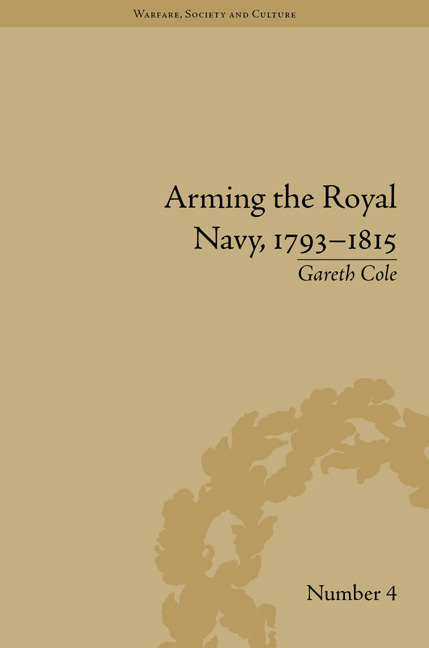Book contents
- Frontmatter
- CONTENTS
- Acknowledgements
- List of Figures and Tables
- Introduction
- 1 The Office of Ordnance and Its Mode of Operation
- 2 Ordnance Relationships with Other Government Departments
- 3 Relations between the Ordnance and Its Contractors
- 4 The Supply of Gunpowder to the Royal Navy
- 5 The Supply of Iron Ordnance to the Royal Navy
- 6 Ordnance Shipping
- 7 The Operations of the Ordnance Outports
- Conclusion
- Notes
- Works Cited
- Index
4 - The Supply of Gunpowder to the Royal Navy
- Frontmatter
- CONTENTS
- Acknowledgements
- List of Figures and Tables
- Introduction
- 1 The Office of Ordnance and Its Mode of Operation
- 2 Ordnance Relationships with Other Government Departments
- 3 Relations between the Ordnance and Its Contractors
- 4 The Supply of Gunpowder to the Royal Navy
- 5 The Supply of Iron Ordnance to the Royal Navy
- 6 Ordnance Shipping
- 7 The Operations of the Ordnance Outports
- Conclusion
- Notes
- Works Cited
- Index
Summary
Unlike consumables such as food and water there was no way of knowing how quickly, or if at all, Ordnance stores were going to be used. Gunpowder was one of the most difficult to manage because it degraded with age and magazines only held a finite amount of powder.
These storage problems were exacerbated by the existence of different types of gunpowder. The years of the French Revolutionary and Napoleonic Wars saw the use of many different types, of which the three main were called by the Royal Navy blue, white and red. Blue powder was powder made using traditional pit charcoal; white powder was older powder that had been dusted and restored and then mixed with the new type of powder, cylinder powder; red powder was the cylinder powder in its pure form. In the early years of the war the navy's ships also received two other types of powder that were known as restored and old store. At times, even foreign powder was issued. It does appear from the records, however, that if any French Powder was kept in the magazines then it was not issued to the navy.
The Administrative Structure of Gunpowder Supply
During the period of the Great Wars the supply of powder to the Royal Navy (and the army) was coordinated through the office of the Comptroller of the Royal Laboratory.
- Type
- Chapter
- Information
- Arming the Royal Navy, 1793–1815The Office of Ordnance and the State, pp. 69 - 86Publisher: Pickering & ChattoFirst published in: 2014



